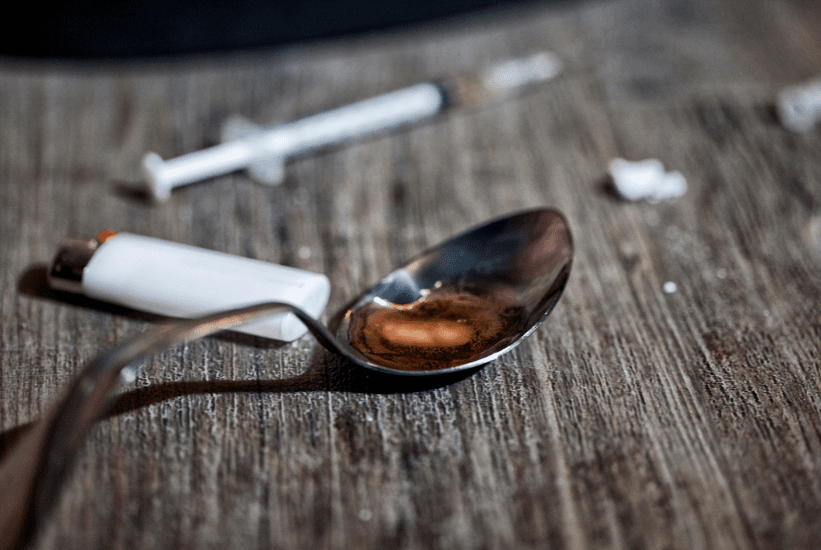The Stages of Heroin Addiction
The opioid epidemic has made it apparent that an astounding amount of Americans are affected by this crisis. Even those who have not personally faced addiction are sure to know someone close to them who has struggled with the difficulties and negative consequences associated with the cycle of substance abuse. Oasis Recovery offers heroin addiction treatment in Asheville. If you or someone you care about is struggling with a heroin addiction or related addiction to opioids or opiates, we encourage you to reach out to us today to speak with a specialist who can provide you with more information about treatment options based on your particular circumstances.
Why People Turn to Heroin and other Street Drugs
Millions of people in the United States abuse prescription opiates. In many cases, the first time a person uses opioids is in a medical setting or because they were given a prescription by a doctor after a minor surgery such as wisdom teeth removal.
Initially, someone may not know what is happening to them. When a person develops a dependency and a doctor or pharmacist refuses to refill a prescription, they may turn to street drugs like heroin in order to stop feeling strong cravings or avoid unpleasant withdrawal effects.
Increasingly, heroin is not heroin. Fentanyl is an extremely potent synthetic opiate that is responsible for the spike in the rate of overdoses and overdose fatalities in recent years. Fentanyl can come in a variety of forms making it especially easy to mix with other substances. Because fentanyl is so potent, only a very small amount is needed to produce extremely intense effects. Cutting fentanyl into other substances has become a common practice because such a small amount is needed to produce powerful effects. Combining fentanyl with other substances has had increasingly dangerous and fatal consequences.
Our Healthcare System is Playing Catch-up
Since the opioid epidemic has gripped the country, doctors and patients are better informed and less likely to prescribe opiates without serious consideration for the potential consequences. Further, doctors are much less inclined to refill prescriptions. While this can result in attempts to “doctor shop”, reports of doctor shopping have steadily decreased as state and national systems as well pharmacies continue their efforts to coordinate medical records so they can flag those who appear to be engaging in negative choices and get them the help they need.
Factors That Can Increase Risk for Heroin Addiction
There are a number of factors that increase a person’s risk of opioid addiction even before they have used opiates for the first time. These factors may include:
- Youth
- Particularly teen, early 20s
- A history of mental health issues
- Genetic history of mental health issues
- Genetic history of substance abuse disorders (SUDs) or alcohol use disorder (AUD)
- Living in stressful circumstances
- Unemployed
- Difficulties at work
- History of work issues
- Financial problems
- Relationship problems
- History of family problems
- Legal issues
- Engagement with others who abuse substances
- Cigarette smoker
- Marijuana abuse
There are genetic predispositions, mental health factors such as depression and anxiety, and environmental factors such as having a low income, or living in a low-income community, that are potential reasons why a person may be more susceptible to abusing opioids like heroin or other substances.
It’s important to keep in mind that those who take opioids as predicted after an injury or surgery are far less likely to develop a habit of abuse or addiction. Keeping this in mind, any person who takes opioids or opiates is at risk of developing an addiction. The potential for addiction is a very real possibility regardless of factors including age, race, class, or gender.
Common Signs of Heroin Addiction
In the early stages of addiction, it’s possible a person may be able to maintain the appearance of normalcy. Someone may initially continue to fulfill their work, family, and childcare obligations. Family and coworkers have an opportunity to help a person find help during these early stages of substance abuse before addiction takes a greater toll on a person’s life.
Common signs of heroin addiction can include:
- Irritability
- Mood instability
- Changes in sleep patterns
- Poor decision making
- Lying or making excuses
- Changes in social interaction
- Inability to provide reasonable explanations for where a person has been
- Inability to explain how long periods of time are being spent
- Increased anxiety
- Paranoia
- Lack of hygiene and other forms of self care
The Stages of Heroin Addiction
Stage One: Contamination
The first stage of addiction begins with initial exposure. In medical terms, this is sometimes called “contamination”. During this initial phase, the experience of drug use and abuse becomes normalized. A failure of the DARE program includes an early discussion of drugs with children before they were even considering the possibility of drug use. Another failure of the program involves exaggerated claims that if you try a drug once you will become addicted and related sentiments.
Among the many problems with exaggerated claims and scaremongering tactics employed in attempted to prevent children and adolescents from considering trying drugs is that once someone discovers some of the claims have been exaggerated or are untruths they abandon the entire argument for risks and negative consequences associated with drug abuse and the very real potential for addiction.
A preferable approach is to approach adolescents and young adults at an appropriate time with factual information that informs them of how drug abuse can lead to addiction in ways that are real as opposed to ineffective scare tactics.
Stage Two: Occasional Use
The second phase in drug abuse that can lead to addiction is the transition from trying drugs to occasional use. One of the underlying problems with so-called “occasional use” is that there are usually no personal parameters an individual has put on what they mean by “occasional”. It may be easiest to recognize this progression in the form of an alcohol use disorder (AUD).
The occasional drinks becomes three drinks, or drinking socially becomes drinking at home, or drinking a few drinks at home becomes having a drink with dinner, or having a drink with dinner becomes having three drinks a night, and once a person is having several drinks every night they have formed either a psychological or physical dependence and are likely to feel withdrawal symptoms and may feel cravings if they do not follow their usual regimen.
Stage Three: Regular Use
The progression from occasional use to regular use indicates that a dependency is being formed. There is a range of psychological and physical changes that occur when substances are abused on a regular basis. The result of these changes adds fuel to creating a cycle of abuse.
Stage Four: Addiction
Addiction itself has its own set of stages. These range from mild to moderate addictions compared to long-term and severe addictions. This is significant, in part, because early intervention can make a massive difference in turning a person’s life around before they suffer the consequences that are typically associated with prolonged or severe addiction.
Once a person has developed a severe addiction, or if a person has had a long-term addiction, or if a person has experienced repeated relapses and been through treatment a number of times, there is additional trauma and negative life experiences that create comorbid issues with addiction.
Those who turn to substance abuse often have a co-occurring mental health disorder and are in need of a dual diagnosis. Those with severe addictions have likely developed additional mental health issues and due to the severity of their addiction and possible psychological and physiological changes may require medication-assisted treatment (MAT) for the rest of their life in order to avoid relapse and maintain sobriety.
Managing the psychological and physical toll of addiction is an obstacle that is challenging for those with prolonged heroin addictions. They often must manage difficult long-term symptoms.
Long-term abuse of heroin is known to cause sexual dysfunction, skin infections, autoimmune disorders, arthritis, a damaged nasal passageway as a result of snorting heroin, collapsed veins as a result of injecting heroin, and other serious medical conditions. Untreated medical issues can put a person with prolonged heroin addiction at risk for extreme mental health issues that can lead to suicidal ideation and a sense of hopelessness, heart infections, blood infections, and lung issues.
The Effect of Long-Term Heroin Abuse
Prolonged abuse of heroin results in mental health issues that can include increased anxiety, agitation, confusion, and poor decision making. Long-term physical effects can include brain damage, a weakened immune system, sleep problems, respiratory issues, and organ degeneration.
Contact Oasis Recovery Today to Begin Your Recovery
While it’s never too late to find a program that will assist a patient in maintaining a healthy, sober lifestyle, early intervention can make a huge difference in addressing heroin and other opiate abuse and addiction before a person’s life spirals out of control.
Reach out to Oasis Recovery, in Asheville, today to speak with a specialist who can help provide you with more information about heroin addiction treatment to aid you in making important decisions about treatment options to create a better future for you and your loved ones.












